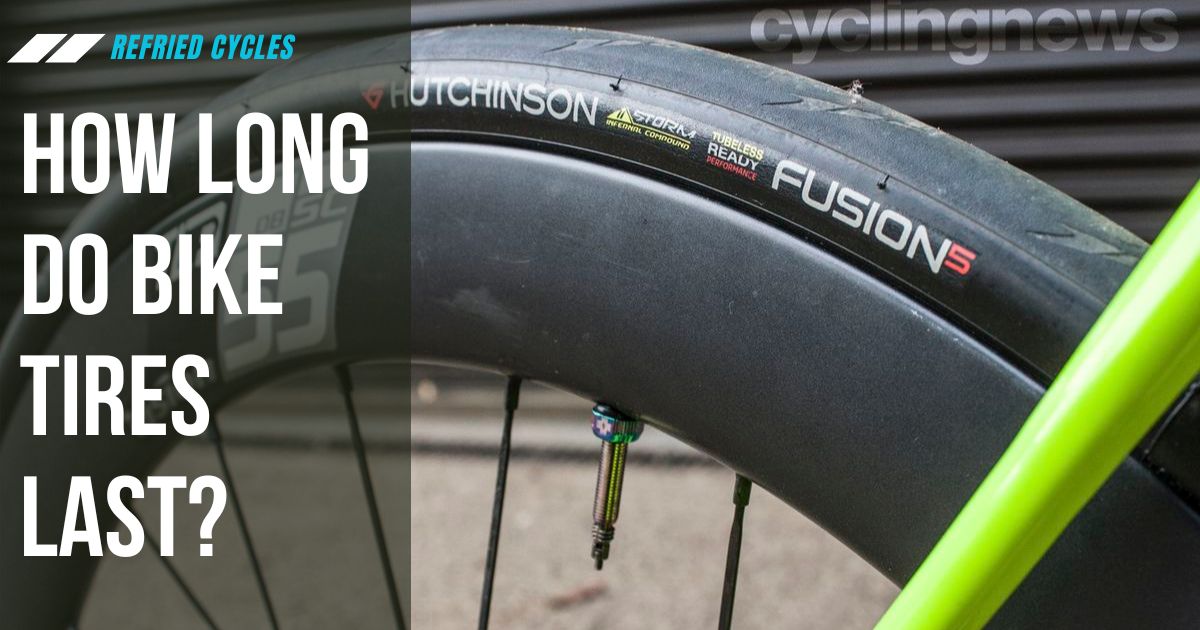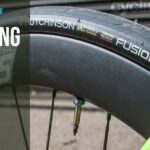How long do bike tires last? It’s a key question every cyclist should ask to maximize safety, performance, and value. Bicycle tires gradually wear out from riding miles, meaning they need periodic replacement. But what determines average tire lifespan? And how can you identify when your tires are due for retirement? In this comprehensive guide, we’ll cover everything you need to know about getting the most miles from your riding rubber. Learn to read your tires’ condition signals and gauge the right timing for replacement. From tire types and conditions to inspection tips and longevity factors, we’ll explore the answer to “How long do bike tires last?” so your wheels keep rolling smoothly for seasons to come.
How long do bike tires last?
Determining the lifespan of bike tires is tricky because longevity depends on several key factors. While exact mileage varies, we can identify typical tire life ranges based on bike type:
- Road bike tires generally last for 1,000 to 3,000 miles. The smooth pavement extends lifespan, but high-performance road tires sacrifice longevity for speed.
- Hybrid/city bike tires last longer, typically ranging from 2,000 to 4,000 miles. Their moderate tread depth and usage on varied terrain splits the difference between road and mountain bike tire life.
- Mountain bike tires represent the shorter end of the mileage spectrum, averaging between 3,000 to 8,000 miles. Rugged knobby treads get rapidly worn down by gritty, uneven trails.
These ranges account for quality tires at moderate inflation levels ridden by average-weight riders. Other variables also influence lifespan significantly:
- Heavier and more powerful riders wear through tires quicker.
- Underinflated tires deteriorate faster from excessive flexing.
- Rougher riding surfaces accelerates tread wear.
- High temperatures and UV exposure from storage can dry out and crack tires prematurely.
- Premium tires engineered with advanced rubber compounds and casings last longer.
By selecting appropriate tires for your bike type, maintaining proper inflation, and storing tires properly, you can maximize your mileage. But be sure to regularly inspect your tires for wear indicators so you can replace them at the right time.
Factors that Affect Tire Life
A bike tire’s lifespan depends on more than just mileage. Riding conditions, maintenance, and other variables significantly impact how quickly tires wear out. Here are key factors that affect tire life:
- Riding Terrain: Smooth pavement keeps tires rolling longer compared to rough trails and gravel roads which rapidly shred tread.
- Rider Style: Aggressive cornering, sharp braking, and fast accelerations all heighten wear versus smooth controlled riding.
- Tire Type: Durable mountain bike tires outlast lightweight but fragile high-performance road tires.
- Rider Weight: More pounds pressing down equals more rapid tire wear. Light riders extend tire life.
- Weather: Wet conditions compromise traction and accelerate wear. UV rays and heat can also damage tires.
- Maintenance: Underinflation strains tires and causes faster deterioration. Check pressure frequently.
- Quality: Premium tires engineered for longevity outlast cheap models even given the same conditions.
- Wheel Alignment: Misaligned wheels distribute force unevenly and lead to uneven tire wear.
- Storage: Letting tires dry out, deform, or get damaged while stored cuts into their lifespan.
Being aware of these many variables allows riders to make tweaks that extend the life of their bike tires. For example, sticking to smooth roads, easing up on aggressive riding, maintaining lighter weight, and keeping tires properly inflated all enable more miles. While you can’t change the weather, selecting tires suited to the climate makes sense. Invest in quality tires fitted for your bike and riding style, then care for them properly so they last and last.
Tire Types: Mileage Estimates and More
The design and construction of different bike tire types translates to considerable variance in expected lifespan. Here’s an overview of popular options:
- Road Tires: With lightweight but fragile casings, road tires offer the shortest lifespan at just 1,000 to 3,000 miles. The smooth center tread also wears quickly under hard pedaling.
- Mountain Bike Tires: Made to withstand brutal conditions, knobby mountain bike tires average an impressive 3,000 to 8,000 miles despite gritty terrain. But the rugged construction comes with added weight.
- Hybrid Tires: Striking a balance between durability and speed, hybrid tires deliver moderate lifespan of 2,000 to 4,000 miles. Their light tread suits mixed pavement and moderate trails.
- Touring Tires: Built for the long haul, touring tires range from 4,000 to 8,000 miles. Slow rolling but puncture resistant, they trade speed for durability.
Electric bike tires have a wide range depending on model but overlap with the hybrid and mountain bike categories for the most part. Of course, factors like rider weight, maintenance, climate and riding style can alter lifespan significantly within each tire type. But understanding these general ranges helps set realistic expectations when selecting new tires tailored for your riding needs. Test out different models within your preferred category to find the ideal balance of affordability, grip, comfort and mileage longevity.
Signs Your Tires Need a Time Out
How can you identify when a tire is due for retirement? Watch for these clear indicators that suggest replacing your rubber:
- Worn Down Tread: Smooth, bald sections of tire tread can’t provide the grip and control needed for safe riding and handling. Inspect depth regularly.
- Cracking: Brittle, cracked rubber means the tire casing has dried out and degraded. Don’t risk a blowout on compromised tires.
- Bulges and Bumps: If the tire surface becomes deformed, the carcass is weakening and prone to sudden failure.
- Frequent Flats: Thinning tread invites more puncture flats. Time to swap out tires if you’re fixing multiple flats.
- Poor Braking and Traction: If tires feel loose and slippery during cornering or braking, the tread is too worn to grip effectively.
- Uneven Wear: Spotting excessive wear on just the center or shoulder tread indicates improper inflation or alignment.
By routinely scrutinizing tires for these red flags, you can proactively replace them before hazardous blowouts occur. Some wear with age is expected, but don’t push past the safe limits. Regular inspections and timely retirement will keep your tires rolling safely for seasons to come.
Pump Up Your Tire Life: Maintenance Tips
Getting the most miles out of your bike tires requires paying them a little extra attention. Follow these maintenance tips to maximize tire lifespan:
- Check Tire Pressure Frequently: Underinflation strains the tire casing and causes rapid wear. Inflate to the maximum recommended pressure.
- Clean the Tires Regularly: Clear away clinging grit, glass fragments, small stones, and other debris that can imbed in and wear down tread. A quick scrub keeps tires rolling smooth.
- Store Bike Properly: Avoid exposing tires to excess heat, ozone, and UV rays which degrade rubber. Keep tires out of direct sunlight.
- Rotate Tires Periodically: Front tires typically wear slower since they carry less weight. Swap front to back to even out wear.
- Align Wheels Carefully: Misaligned wheels distribute force unevenly across the tread, causing tires to wear in an irregular, accelerated pattern.
- Consider Tire Liners: Adding protective layers helps prevent punctures and early tire failure. Sealant also helps prolong tire life.
- Upgrade Smartly: Don’t dramatically increase tire width or diameter beyond original specs, as this strains the wheels and frame.
- Inspect Frequently: Check for embedded glass/debris, abnormal or uneven wear, dry rotting, loss of traction, and other problems so you can address them quickly.
With some diligent preventive care, your tires will deliver more happy miles. Get into good maintenance habits so you can keep rolling safely on long-lasting rubber.
As we’ve seen, the lifespan of bike tires can vary widely depending on your riding style, maintenance, and tire quality. While exact mileage is unpredictable, keeping tires properly inflated, regularly inspecting wear, and selecting rubber engineered for durability will all help maximize useful life. Learn to spot visual warning signs like bald tread or sidewall cracks so you can replace tires at the right time. For more tips on getting the most from your bicycle, check out our friends at Refried Cycles and their awesome blog posts on bike maintenance and upgrades. Understanding factors that influence longevity allows you to optimize tire life and safety. So inspect your treads and ask yourself “How long do bike tires last?” to keep your bike rolling smoothly for seasons to come.









